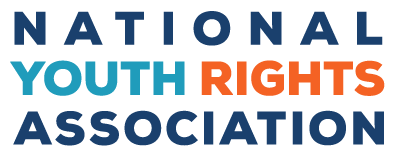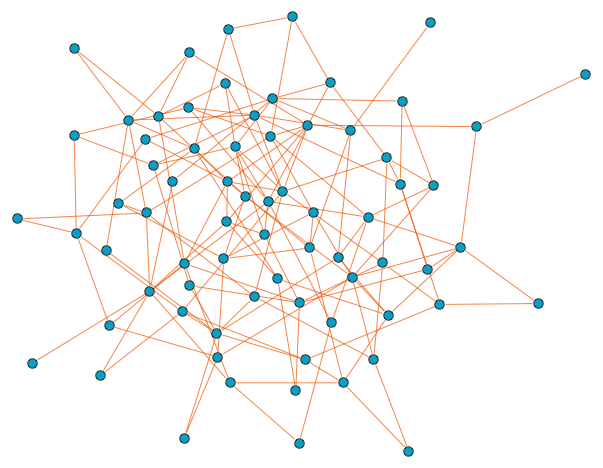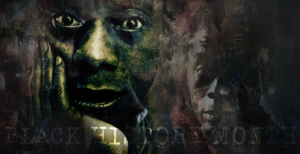The definition of a mental disorder is a “dysfunction in the psychological, biological, or developmental processes underlying mental functioning.” Unfortunately, this definition is vague and leaves much room for debate and criticism. Since it is not entirely clear what “dysfunction” means, the nature of mental disorders is usually open to interpretation. This is especially problematic for young people who don’t have medical autonomy, because they can be controlled by the interpretations and decisions of their parents. Unlike adults, who have an unspoken amount of control and respect when they visit a doctor with symptoms, youth are in an inherent position of inferiority because of their age. This can lead to doctors misdiagnosing symptoms “as typical adolescent mood swings” when they are indicative of something much more serious, like depression or anxiety. This discrimination may occur because the person is young, or because parents ignore important symptoms — potentially out of fear, ignorance, or disbelief. Problems with diagnosis can go both ways, however other types of mental disorders like ADHD are thought to be overdiagnosed in youth. Both misdiagnosis and underdiagnosis have one thing in common though; they can be traced to discrimination towards young people who are not always given the freedom or respect to make decisions for themselves.
Young people who come into conflict with their parents, their schools, or the law are often diagnosed with mental disorders. While these diagnoses can be helpful to struggling youth, there is also potential for overdiagnosis. Psychiatry has diagnosed several mental disorders that only apply to young people who are in conflict with adults or institutions (like schools), such as oppositional defiant disorder (ODD). At the same time, psychiatry has diagnosed few or no specialized mental disorders that apply the other way around: to adults who are in conflict with young people. This indicates a trend of pathologizing certain adolescent behaviors.
Oppositional Defiant Disorder and Conduct Disorder
The symptoms of other common disorders ascribed to youth, such as ODD, are shockingly ordinary and inexact. It is commonly known that most modern humans go through a developmental phase of cynicism and rebellion during adolescence (anywhere from 9 to 23), where opposition and defiance is considered normal. Although ODD allegedly does not apply to “normal” teenage rebellion, it still seeks to pathologize the defiance of authority. Whenever resistance of authority is even a criterion for a mental disorder, we should consider the possibility of discrimination against youth. In 2014, up to 16% of adolescents were diagnosable with some form of ODD. While many of these young people may indeed have ODD, it’s important to keep in mind that defiance in adolescence is a sensible reaction to the way young people are treated and does not always indicate a mental disorder.
Ageism can also sneak into the diagnostic criteria for other disorders. For example, conduct disorder is classified as “a repetitive and persistent pattern of behavior in which the basic rights of others or major age-appropriate societal norms or rules are violated.” While there are some serious behaviors covered in the diagnosis (most of which involve violence), it is possible for someone to be diagnosed for running away or being truant, even though these may indicate an issue with choices made by the parent. The phrase “societal norms” in the diagnostic criteria is also cause for concern, because it suggests a bias against young people who don’t fit the mold of social constructs. These norms can be harmful by encouraging conformity rather than individuality; diagnosing young people because they violate such norms can be deeply problematic.
In the DSM-5 criteria, these are some questionable symptoms of conduct disorder:
- 13. Often stays out at night despite parental prohibitions, beginning before age 13 years.
- 14. Has run away from home overnight at least twice while living in the parental or parental surrogate home, or once without returning for a lengthy period.
- 15. Is often truant from school, beginning before age 13 years.
Reactive Attachment Disorder
This uncommon disorder can be diagnosed in infancy and is thought to involve “a lack of attachment to any specific caregiver at an early age, and results in an inability for the child to form normal, loving relationships.” Unfortunately, the diagnosis is sometimes accompanied by disturbing “attachment therapy,” which involves a “re-birthing” simulation and “resulted in the injury and death of several children who were in the foster care system.” These tragic abuses illustrate the discrimination against youth that can occur in the mental health care field, especially when the young people are in an underprivileged position. Youth diagnosed with RAD, particularly if they are infants, cannot stand up for themselves like adults can in medical treatments settings. It’s not a coincidence that such disturbing treatment is only given to young people, who have been taken advantage of and abused as a result of this diagnosis. Some victims of the treatment “complained about being in pain” but were not believed. This tragedy begs the question: would we believe adults?
Attention-Deficit/Hyperactivity Disorder
To diagnose ADHD, a child under 17 must exhibit at least six of nine symptoms in both the category of inattention and hyperactivity for six months in multiple settings. This seems like a fairly stringent set of requirements. However, the symptoms are extremely subjective and generalized, including “talking excessively,” “having trouble organizing tasks,” and “feeling restless.” Every single symptom can just as easily be attributed to the burst of developmental energy common in seven-year-olds (the average age of ADHD diagnosis), or a surge in testosterone typical of that age of boys. After all, boys are more than twice as likely to be diagnosed with ADHD than girls. It is simply not in the hormonal or psychological nature of developing children to remain seated still and silent at a desk for several uninterrupted hours with such a small amount of mental stimulation, every day, for months at a time.
The explanation for psychiatric disorders is typically simplified as a “chemical imbalance,” and children may very well have an imbalance of neurochemicals. However, the imbalance may be caused by many different variables (often temporary, developmental ones), and the problem may not even be a lack of the chemical, but rather another issue entirely that presents itself in a way similar to the symptoms of the disorder.
When students are restless and unable to focus in school, this is a failure not only on the student’s part, but on the school’s part as well. Schools do not take their fair share of the responsibility for these failures. When teachers cannot hold students’ attention, the students risk being diagnosed with a mental disorder, which tells them that they lack focus and discipline. Meanwhile, teachers do not risk being diagnosed with a mental disorder for making other people restless.
In addition to this double standard, ADHD also turns an institutional problem into a medical one. Instead of addressing inattention by reforming schools and teaching methods, society can address it by medicating inattentive students. 69.3% of children with a current diagnosis of ADHD have received medication for it. These medications are serious prescription drugs, and come with a variety of short-term and long-term side effects. This trend of addressing potential institutional problems with prescription-grade medication has troubling implications for our society.
Autism Spectrum Disorder
Autism Spectrum Disorder (ASD) is another prime example of misdiagnosis of youth. It’s not uncommon to hear a small child unknowingly blurt out an insensitive or painfully blunt comment because they do not yet recognize the social constructs surrounding different ideas. There are certain periods when kids develop advanced social skills, like understanding euphemisms and deciphering facial expressions, but they do not always fit the strict criteria laid out by professionals. Young people must learn skills to ride a bike, read books, and even walk, so of course it would take years for them for be socialized. For some, it simply requires more time. That is why it is estimated that 13 percent of all children who have been diagnosed with autism were misdiagnosed.
Despite these instances of misdiagnosis, the correct identification of autism spectrum disorder can change lives for the better. After his diagnosis in adulthood, artist Martin Robinson “began to understand himself by identifying triggers and learning coping strategies in order to better function in day-to-day life.” This is the purpose of mental health treatment, and youth who are helped by such treatment should not be ignored. In fact, ignoring mental disorders can contribute to the stigma of all mental illnesses by making them even harder to discuss. However, it’s also important to remember that the misdiagnosis of youth can occur, and may very well result from traits linked to adolescence. The prevalence of these misdiagnoses begs the question: is psychiatry always treating the children, or is it sometimes treating the parents and teachers by conforming classrooms to a single standard of compliant behavior?
Furthermore, youth with autism often experience extreme discrimination, including violence, from their own parents who treat Autism as a disease that needs to be cured instead of respecting their children’s’ identities. These parents often engage in activism claiming there is something wrong with their children and not giving the youth a chance to stand up for themselves.
Autistic youth are often forced into “special education” programs against their will, and sometimes abusive behavior modification facilities. To an even greater extent than other youth, youth with autism are treated as if they are not capable of making their own decisions.
Drugs and Youth
While many medications can effectively address psychological issues, youth should have some control over their treatment plans. People under eighteen are “often allowed to consent to treatment for . . . substance abuse, mental health care, and birth control,” but these rules vary by state and are thus not guaranteed. Even though there are dozens of international regulatory precautions on them, American youth are often not educated on the repercussions of psychotropic drugs. To decrease ageism in the mental health sector, young people should be educated and given a voice in their medical treatment plans.
In fact, it is often insisted that healthy children have disorders and require medication simply to make them more manageable, or in extreme cases, sedated. Foster children are at least four times as likely to be on a psychotropic drug, and over 40% of those children were given three or more additional medications within the same month. Medicating at that level can bring tremendous hazards, even under very careful regulation.
While children in foster care are disproportionately exposed to trauma that may cause or exacerbate mental illness and behavioural disorders, this does not account for the disparity of prescriptions between them and the rest of the population. Children in foster care are often prescribed medication without proper psychotherapy because they lack the resources or stability (initial diagnosis, ongoing monitoring and check-ups). For example, there is evidence that ongoing therapy can work as well as medications for some disorders, but children in foster care don’t often have this opportunity.
Most often, the parents are listening to the licensed physician, representing a one-trillion dollar industry that conceals as much information as legally possible. Demanding that a child changes because their behavior is undesirable is cruelty. Forcing them into that change without their consent or knowledge, despite potentially permanent psychological damage, is child abuse. Using chemical manipulation to control children while making a profit should be illegal.








